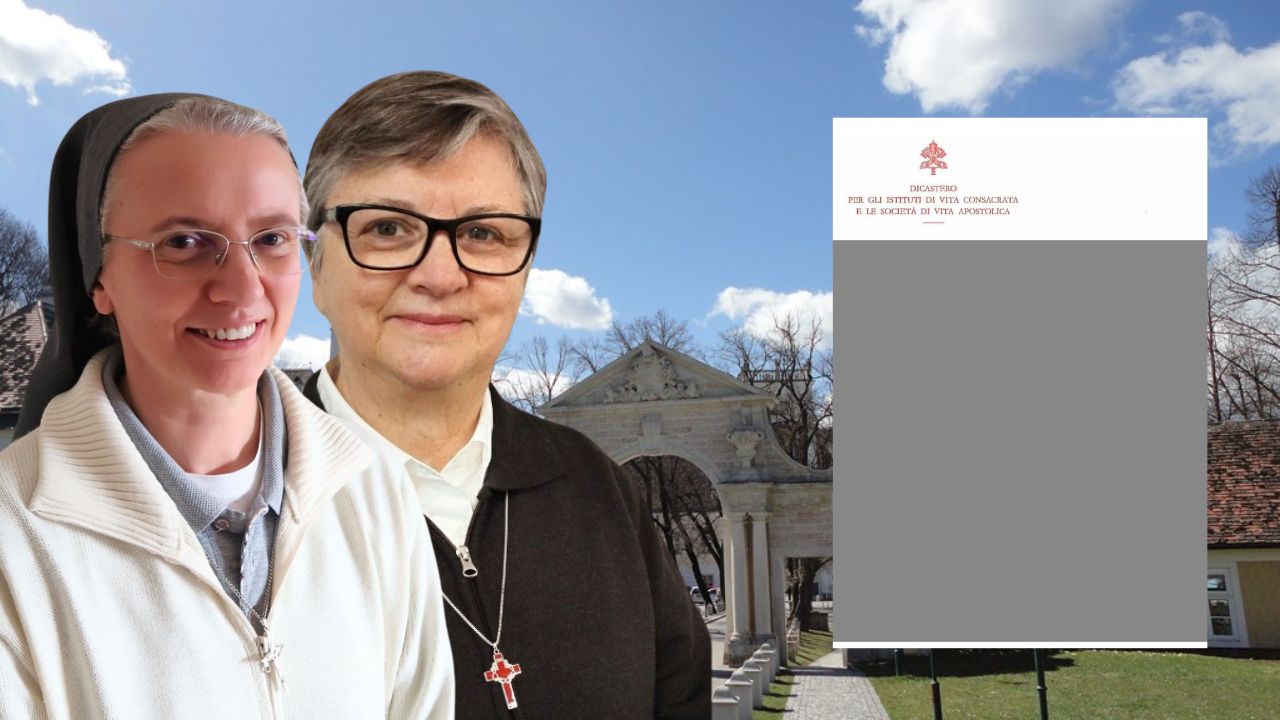Vatican City – The new tandem at the helm of the Dicastery for Institutes of Consecrated Life and Societies of Apostolic Life — composed of Sister Simona Brambilla, Prefect since January 2025, and Sister Tiziana Merletti, Secretary as of the following May — has already begun to stamp its ideological imprint. And, true to form, the first potential victims appear to be those vibrant and dynamic communities that do not fit into the forma mentis of two women in their sixties, daughters of the 1968 ideological era.
Just a few days ago, a letter was sent from Piazza Pio XII to the Cistercian community of Heiligenkreuz, the historic Austrian abbey which today represents one of the few authentic examples of monastic renewal in Europe. The letter announces an Apostolic Visitation by the Dicastery — a strong and clear signal, behind which looms the shadow of Mauro Giuseppe Lepori.
Mauro Lepori and Envy
Behind this move by the Dicastery lies the controversial figure of Mauro Giuseppe Lepori, Abbot General of the Cistercian Order, who has long pursued a personal and obstinate crusade against those within his own religious family who dare to walk paths different from his own. Well known for his ties to Communion and Liberation circles, his thinly-veiled ambition to become a bishop, and his tireless participation in conferences, Lepori has done everything in his power to place under commissionership those religious communities that do not reflect his model — even without concrete evidence or accusations.
A striking precedent is that of the Monastery of San Giacomo di Veglia, which fell into the crosshairs thanks to Lepori’s ruthless manoeuvring and the silent complicity of the Dicastery. Now it is the turn of Heiligenkreuz, a dynamic community full of young people, led by Abbot Maximilian Heim, a solid and internationally respected figure. Heim has often been the target of Lepori’s destructive criticism, guilty of embodying a model of Cistercian life considered “not monastic enough” by certain Italian (or French) standards. But is there really only one way to be a monk? Or is the Church composed of a diversity of charisms?
The Subtle Poison of Clerical Envy
Here lies a key issue: envy, an endemic plague in the clergy and religious world. Whenever a community thrives, renews itself, attracts vocations, and rekindles the People of God's trust, there is always someone — frustrated and insecure — ready to sow doubt, spread slander, and build toxic narratives. No proof is needed: a whisper, an allusion, an anonymous email sent to the right person, and the inquisitorial machinery is set in motion.
Moral insinuations and slanders constantly flow from certain mouths — but in truth, what they attribute to others is often the mirror of their own hidden desires. The recent history of the Church is littered with summary trials, where the phrase “Apostolic Visitation” becomes a prelude to suspicion, rather than a sign of truth and pastoral care. Those who sow division often do so by projecting their own inner wounds onto others, as many scholars of the psyche remind us.
Heiligenkreuz is a clear example: a flourishing, youthful community, deeply rooted in liturgy and monastic life, with a real impact on families, students, and the faithful. In an age of vocational desertification, such an abbey should be imitated and admired, not persecuted.

An Ideological Attack Disguised as an Inspection
But the issue here is not just Lepori. The real problem is that the Dicastery is now led by two women who embrace and promote a suspicious, homogenising vision towards any form of success in religious life — especially where fidelity to tradition is joined to pastoral vitality.
The Brambilla-Merletti duo risks turning the Dicastery into an instrument of ideological repression, where Apostolic Visitations are not tools of discernment but political weapons used to demolish what doesn’t conform.
In a Church that all too often takes refuge in abstraction or compromise, abbeys like Heiligenkreuz are uncomfortable beacons. Too much liturgy? Too much Latin? Too many young men in habits? For some, perhaps yes. Maybe that's exactly why Heiligenkreuz is under attack.
And perhaps it’s no coincidence that this is happening just now, with two women at the helm of a Dicastery never before configured in this way. Let us not forget, too, that some harbour hostility towards this abbey because it is the home of the Philosophisch-Theologische Hochschule Benedikt XVI — a theological institute recognised by Benedict XVIhimself in 2007, known for its excellence and for its faithful Catholic professors. It is clear, then, that the real problem here is the use of ecclesial power to support an ideological and homogenising vision, one that stifles the diversity of charisms and stifles what grows naturally.
A Warning for the Whole Church
The Heiligenkreuz affair is not just an internal matter for the Cistercian Order. It is a test case for the entire Church. If personal vendettas and ideological jealousy are allowed to take precedence over truth and the vitality of charisms, then no one will be safe.
Not monasteries, not new communities, not movements, not even parishes striving to live the Gospel with rigour and beauty. Heiligenkreuz is not perfect — no community is — but it is a sign of hope amid the rubble. If even this is torn down to appease the frustrations of the few and the control urges of those who fear freedom, then it becomes clear: the problem is not with the monks, but with those who govern, their souls blinded by ideology and resentment.
“By their fruits you will know them.” (Matthew 7:16) Perhaps now is the time to look at the fruits — and not let them rot because of envy.
p.L.H.
Silere non possum